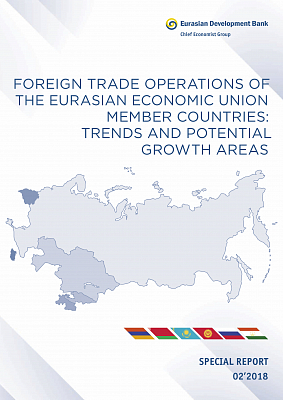FOREIGN TRADE OPERATIONS OF THE EURASIAN ECONOMIC UNION MEMBER COUNTRIES: TRENDS AND POTENTIAL GROWTH AREAS

-
Full text
PDF, 644.96 Kb
Mutual trade between Eurasian Economic Union (EAEU) countries is one of the key indicators of the region’s integration processes. At the same time, the intensification and diversification of mutual trade is an important driver in increasing potential long-term economic cooperation between EAEU countries.
This research includes an analysis of EAEU foreign trade with third countries as well as mutual trade during the early years of the formation of the EAEU. It not only reveals the structure of existing trade flows, but also determines potential growth areas for the development of inter-industry trade between the regional association’s member countries.
Analysis of trade flows shows that exports from EAEU member countries to third countries are less diversified than those in mutual trade. Commodities are still the most competitive exports for EAEU countries on foreign markets. In 2017, there were signs of increased commodity diversification in mutual trade. However, in terms of geographical distribution, bilateral trade is still built around the Russian market. In this context, the potential for expanding integration is concentrated in the development of intra-industry trade. According to authors estimates, the greatest potential for increasing mutual intra-industry trade exists in the Republic of Kazakhstan, the Kyrgyz Republic and the Republic of Armenia. Inside the union, there is an opportunity to expand mutual trade in products from the textile and chemical industry, metals and products thereof, processed forestry products, as well as machinery and equipment.
